


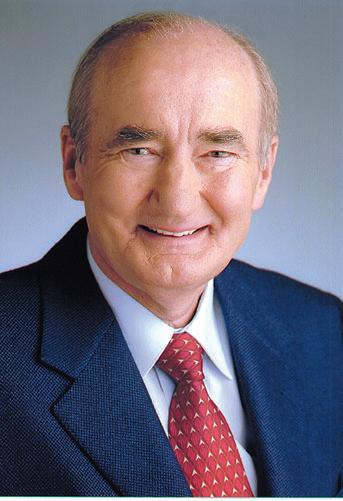





Do teenagers binge because nobody has the guts to stop them - especially parents?
04
If there’s life somewhere out beyond the asteroid belt, what does this mean for God?
06
Beautiful faces - shame about the values. Is Hollywood increasingly irrelevant to modern life?
10
What the hell is Cell?
The new technology behind PS3 is shaping up to be revolutionary
12
A message from UNDA - it’s where your future might lie
16
■ By Phil Bayne
Wartime stories passed down by Great Uncle Jock were the inspiration for the essay that has earned Isabel Cowan a 2006 Simpson Prize and the opportunity to experience the ANZAC spirit firsthand in Gallipoli.
The prize commemorates the legendary Private John Simpson Kirkpatrick, 22, an Englishman who migrated to Australia and joined the ANZAC corps in 1914.
While at Gallipoli he transported wounded Australian troops on his donkey down Monash Valley and back to safety on the beaches, but survived only 24 days before being killed by machine gun fire.
He became one of the most famous figures in Australian schools and the nation’s military lore and was adopted as the highest example of bravery and friendship to those in need.
Isabel, a Year 11 student at Santa Maria College, was one of seven students from across the country to win the Simpson Prize. More than 1300 essays and audiovisual presentations were
EDITOR PETER ROSENGREN Letters to: cathrec@iinet.net.au
JOURNALISTS JAMIE O'BRIEN jamieob@therecord.com.au
BRONWEN CLUNE clune@therecord.com.au
MARK REIDY reidyrec@iinet.net.au
OFFICEMANAGER CAROLE MCMILLEN administration@therecord.com.au inc. sales/subscriptions
ADVERTISING CHRIS MIZEN advertising@therecord.com.au
PRODUCTIONMANAGER DEREK BOYLEN production@therecord.com.au
587 Newcastle St, Leederville
Post: PO Box 75, Leederville, WA 6902
Tel: (08) 9227 7080
Fax: (08) 9227 7087

received as part of the 2006 competition. The topic put to students was: ‘Courage, mateship, determination, resourcefulness and a sense of humour are identified as
characteristics of the ANZAC tradition and spirit. Select any one or more of these characteristics and explore their significance to Gallipoli and in more recent times.’
Tapping into the family history care of her father and aunty, Isabel set about writing her essay even though initially she didn’t hold too much hope of success.
“I really didn’t think I had much chance of winning but my history teacher, Mr Sheehan, encouraged me to try anyway,” she revealed.
“As it developed, the family connection with Uncle Jock made the process even more special as it meant something to me personally.”
Evidence of this can be seen in the following extracts taken from Isabel’s essay:
“The ANZAC spirit is integral to our sense of identity. It has continued to be the spirit that binds the country and it is important that it is passed on to future generations. It is heartening then, to see this happening with the ANZAC Day memorial service at Kings Park that is famous Australia wide for its large attendance, especially by those from my generation.
“The characteristics of the ANZAC spirit such as courage, mateship, resourcefulness and a larrikin sense of humour have defined
our nation today. As Australia has matured and developed, so has the ANZAC spirit. It inspires actions like helping others in crisis, and the common identity that unites us enables the development of stronger communities. The ANZAC legend is alive and active today. It is my hope that we never forget its value to us.” History teacher, David Sheehan, said Isabel’s persistence, perseverance and hard work were being rewarded with an opportunity that every Australian would cherish for life.
“The College is immensely proud of Isabel’s achievement and I’m sure she’d agree that her 12 drafts were well worth the effort,” he added.
According to the Australian War Memorial website Private Simpson became famous for his work between 25 April, when he landed, and his death in action on 19 May, 1915.
Australian war historian CEW Bean said he transported wounded men day and night from the fighting in Monash Valley to the beach on ANZAC Cove through deadly sniping and the most furious shrapnel fire.

When discovery ran an article on True Body Image in our last edition, we were deluged with requests from readers for more related information.
A new Australian initiative is closely related.
■ By Mark ReidyArevolutionary new sex education program founded on the teachings of Pope John Paul II will be included in a number of Catholic dioceses around Australia by the end of the year. The Values Based Sex Education (VBSE) program, entitled, “It’s Your Choice”, is the innovation of Jonathon and Karen Doyle, National Directors of the Melbourne based CHOICEZ. COM.AU.
The idea for the program developed during their work within the Masters of Marriage and Family Studies postgraduate program at the John Paul II Institute in Melbourne. Inspired by the teachings of the late Pope, the couple developed their VBSE program to incorporate Catholic moral theology and sexual ethics and make it available to teachers and young people in a contemporary and dynamic way. Mr Doyle told discovery that the program was not designed to replace existing school curricula but rather to






There’s a simple reason why students binge-drink at parties. No one has the guts to stop them.■ By Matthew Mehan
It’s not often that the town of Bar Harbor, Maine, is featured in The Drudge Report, the internet nexus of political gossip and breaking news.
But recently, it highlighted the drinking habits of Bar Harbor teenagers in the the US state of Maine. According to the Bangor Daily News, 60 high schoolers from Mount Desert Island Regional High School gathered at an out-of-theway gravel pit to celebrate St Patrick’s Day with an ocean of beer.
“You probably could have made your month’s mortgage payment on your house just with the returnables,” said one of the police who broke up the party.
The bash was organised with the help of the personal websites MySpace and Facebook which gave directions to an out-of-the-way gravel pit.
As police rounded up the students, other revellers continued to drink until it was their turn to get busted.
What amazed the local police was that the girls and boys were unafraid of what their parents would say.
This is not just a problem in rural Maine. Many American parents have stopped demanding sobriety and draw the line only at drunk-driving.
As a result, house parties have become a regular teen social outlet. At best, the host parents collect car keys from party-goers, but they still provide alcohol, only asking that they stay the night if they overdo it.
A Washington DC suburban publication, Bethesda Magazine, recently investigated the habits of local teens from public and private schools in wealthy Montgomery County, in Maryland. It cited Captain Thomas Didone, of the local police:
“Over the past few years the problem has increased primarily due to parents hosting parties where alcohol is present and not allowing officers access so that we can safely close the party. When we can’t issue citations and call the teens’ parents, they continue going to parties and remain at risk.”
If parental resolve slackens, do teens at least fear their high school principal? Not in Bar Harbor.
Principal Sally Leighton says that only students who participate in extracurricular athletics or clubs can be punished. They have to sign a good behaviour contract which penalises off school grounds drinking with only a 15-day suspension from the activity or sport.
What about the coaches? Don’t high schoolers fear them? Yes, but serious parties are held between seasons, when good behaviour contracts lapse.
This legalistic approach suggests that contracts are not building blocks of character but mere guarantees that the coaches will have players in peak physical condition.
What about the law? That, too, is ineffective.
The worst outcome for a night of drunkenness is a fine or community service.
Only the poorest families will be hurt by fines and community service is a badge of honour for high school rebels, provided they can still play sports and participate in extracurricular activities.
Well, if parents, principals and police fail to put the fear of God in teens about underage binge drinking, what about God himself?
How many at the gravel pit party were believers?
Statistically speaking, probably not many. According to a 2001 study in the reputable journal Addiction1, American teens with religious convictions are 2.8 times less likely to drink than teens with no religious convictions.
The same study revealed that regular churchgoers are 23.5 per cent less likely to try alcohol.
At least there’s somebody out there who can help teens stay sober.
Some states are cracking down on permissive parents.
In the 1990s 35 states passed “social host” laws, making parents liable for drunk teens who cause injury or death on the road.
More recently 15 states have begun implementing parental education programs.2 A few states fine parents or place them on probation.
But with the people closest to teens so reluctant to discipline them, can we really hope to deal with the problem effectively?
Matthew Mehan is US Editor of MercatorNet.

Teens binging: Part of the problem, based on the American experience, would seem to be a generation of parents who are clueless about their role, and the importance of character.
Notes
(1) I. Sutherland and J.P. Shepherd. “Social Dimensions of Adolescent Substance Use. Research Report.” Addiction. 2001, pp 445-458.
(2) “Underage drinking laws take aim at parents”. Stateline.org. Oct 13, 2004.



Despite millions of pounds spent in Britain on getting girls on an equal footing with boys in science education, new research shows that girls are simply not interested in the same scientific world as boys. Interviews with 1200 15-year-olds showed that boys want lessons about bombs and chemical warfare, while girls want to learn about anorexia, abortion and dreams. For boys, the most dreaded topic was alternative therapies. However, they agreed with girls about other turnoffs: few of either sex were interested in the benefits and possible hazards
of modern farming methods, or “famous scientists and their lives”.
The findings, from a study by the Centre for Studies in Science and Mathematics Education at the University of Leeds, suggest that separate syllabuses may have to be drafted for each sex, say the researchers. They found the “persistence of gender differentials” in what pupils wanted to study “disappointing” in view of the money spent on ensuring equity of access.
Boys like: Explosive chemicals; how it feels to be weightless in space; how the atom bomb functions; biological and chemical weapons and what they do to the human body; black holes and other
spectacular objects in outer space; how meteors, comets or asteroids can cause disasters on earth; the possibility of life outside earth; how computers work; the effects of strong electric shocks and lightning on the body; brutal, dangerous and threatening animals.
Girls like: Why we dream and what it means; cancer, and how we can treat it; first aid and basic medical equipment; keeping fit; how we can protect ourselves against sexually transmitted diseases; HIV/Aids and how to control it; life and death and the human soul; biological and human aspects of abortion; eating disorders; how alcohol might affect the body.
~ The Independent, Mar 23
Continued from page 3
Within the Facilitator’s Manual the Doyle’s state that they have significant concerns about the adequacy of the sexual formation and education that Australian teenagers are currently receiving and they believe that those in the 15-19 year age group are most at risk.
Despite an increase in sexual information for teenagers over the last two decades, unplanned pregnancies, sexually transmitted infections and sexual violence have continued to rise.
The Doyle’s believe that those in this age group are most vulnerable because they have and are receiving inappropriate information in the most critical years of their sexual development.
They suggest that the damage has been exacerbated by a culture of peer pressure, sexually saturated media and family breakdown.
As a consequence of the urgent need, the “It’s Your Choice” program was developed.
The program aims to communicate to young people that the option of delaying sexual activity until marriage is an achievable and beneficial lifestyle choice.
It seeks to provide a safe and non-threatening environment in which teenagers can develop healthy decision-making and relational skills, as well as access medically accurate and age appropriate information.
The program is presented in DVD format and is accompanied by an easy to follow Facilitators Manual that minimises teacher’s preparation time.
The DVD consists of four parts of approximately 25 minutes each and includes suggested discussions and activities to complement each session.
The program recognises parents as the prime educators of their children and incorporates them throughout, including a preliminary information night and ongoing involvement in homework discussion topics.
The presentation is professionally produced and will appeal to a young audience with its graphics, music and peer contributions.
It is balanced with input from health professionals and others working with young people.
The first part of the program focuses on the sexual messages portrayed through the media and encourages young people to stand back and critically analyse the impact these have on their lives.
“The program... has been designed to meet the needs of a diverse population with differing religious, cultural and educational perspectives.”
Issues of self-respect, dignity and the uniqueness of others are then addressed.
“If you don’t know your own worth”, we are told, “You can give yourself away cheaply.”
The short and long consequences of sexual choices are then explored and include personal testimonies from those who have experienced abortion and sexual disease.
The final section deals with relationships and how sex should be a precious gift given freely within a commitment of marriage. It
distinguishes the difference between love and lust and explores how love can at times be a choice not to follow one’s feelings. The program, whilst founded on Pope John Paul II’s Theology of the Body, has been designed to meet the needs of a diverse population with differing religious, cultural and educational perspectives. It can be used in classrooms, in youth groups, to enhance existing programs or for parents to directly teach their teenagers.
The program will be offered to every Catholic secondary school in Western Australia.
Information about the fourpart DVD series will be sent to each Religious Education Coordinator.
National Director of the Program, Jonathon Doyle, is hoping that many in WA’s Catholic Secondary school system will respond positively to their offer.
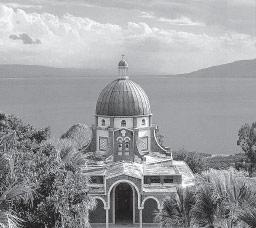
31 July, 10 Sep - Fr Frank Perry, 10 Oct - Fr Terry Raj Departs
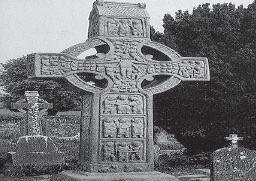
8 Jun - Fr Warren Edwards, 2 Sept Fr David Tonks
- Fr Frank Perry.

Fr Brian Ahearn, 17 Jun (Anniversary)
- Fr Andrew Grace and Tony & Lorraine Grace (pictured), 10 AugFr James Kane, 12 SepFr John Rate, 7 Oct - Fr Patrick Vaughan, 18 Oct 2006.
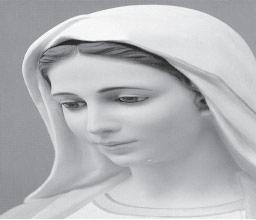

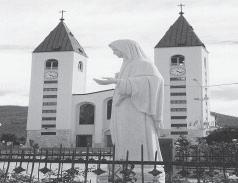

Why can’t we be friends with the people we know instead of looking for them in galaxies far, far away?
■ By Walter MackenMy conversations with Dublin students suggest that today’s youth find it easier to believe in aliens than in angels. They have watched so many science fiction movies with green men speaking in strange clicks and spits that they presume they must exist.
Even one of Mel Gibson’s movies, Signs, in which he stars as an American pastor who has lost his faith, has “true-green” aliens strutting about. Steven Spielberg’s recent remake of War of the Worlds, H.G. Wells’s tale of Martian invasion, features green men set on exterminating us.
Nonetheless, I love science fiction. One of my favourite writers is Arthur C. Clarke, who still produces books though well into his 80s. I have read most of them. A scientist himself, he creates imaginary worlds which appear to be quite coherent. But I was often struck by the thought: “Why

are most sci-fi writers atheists?”
I remember one of his tales, The Star, about a priest on a spaceship reconnoitring a scorched planet in
a distant galaxy. His faith is shaken when he discovers that a vanished civilisation was incinerated when its sun flared into the supernova which guided the Wise Men to Bethlehem. It was very sceptical and very, very depressing.
In fact, in the worlds of science fiction there are few signs of a transcendent force. The Universe, full of spaceships and alien creatures and far-flung stars seems to have been planted there by itself. Of course, philosophically speaking, this is impossible. Someone had to put the universe there. Even the pre-Christian philosophers Plato and Aristotle knew that.
But Clarke’s views may be evolving. In a more recent story his heroes and heroines are travelling right across the universe in a space ship as big as a continent. The ship is run by “extraterrestrials” whom no one sees or talks with except through robots. It is a closed society like Planet Earth itself, with thousands of people trying to create a harmonious
world, all enclosed in an artificial sphere. As far as they can guess, there are other species in the same ship, being observed by these superior intelligences. Like all stories it runs on and on. But the startling element of this story is that some intelligences are beyond what we can see. This made me return to C.S. Lewis, the literary critic and novelist who became a Christian apologist. In addition to his marvellous Narnia series, he wrote a sci fi novel called Out of the Silent Planet. Mars is inhabited by various groups of aliens, who have not been affected by original sin and live in perfect harmony. It is a little like a modern version of Thomas More’s Utopia and a delight to read. There are few science fiction novels with a Christian background. Tim Powers, an American Catholic inspired by C.S. Lewis has written some. Another is the classic A Canticle for Leibowitz, by Walter M. Miller Jr, a 1959 novel about the aftermath of a nuclear holocaust. But there aren’t many others.
These thoughts crystallised recently on reading an article by Stanley Jaki in the Fellowship of Catholic Scholars Quarterly of Winter 2005. Jaki is a well-known philosopher of science and theologian who has written extensively on the boundaries of scientific thought and on the origin and destiny of the Universe. He focuses on the fact that Christ was born in a far corner of the Roman Empire. At that time the known universe was very small. As telescopes were invented, the Universe got bigger. As soon as Galileo found mountains on the moon, fantasy began to take over. Soon people started to speculate about who else might be living in this vast universe - and whether they were, or could be, Christians. Did Christ redeem them all?
“Underlying all those fears and fantasies about a planet-hopping saviour was the presumption that life was not, indeed could not, be confined to a puny corner of the world even in its intelligent form,” writes Jaki.
He mentions de Fontenelle, writing in 1686 a pseudo-scientific book about a plurality of worlds. It was pure conjecture about the inhabitants of Venus, Mars, Jupiter and Saturn. But even more serious thinkers, like the enormously influential philosopher Emmanuel Kant, were swept away.
Twenty-five years before he produced his Critique of Pure Reason in 1781, Kant published a Universal Natural History and Theory of the Heavens. He spoke knowledgeably about Mercurians, Venusians, Martians, Jovians and Saturnians. Even Herschel, the observer of countless galaxies, believed that the Sun was inhabited.
How could such intelligent men believe in such nonsense?
Jaki argues that they were seeking to replace God. When man does not see himself as a creature of God, then his mind is a mere sparkle in the universe, and there must be millions of species of minds scattered everywhere.
Once God is forgotten, Myself comes to the fore, and reason departs into the realm of fantasy. “In his Grammar of Assent where he dealt with various forms of proofs,” the 19th century theologian John Henry Newman

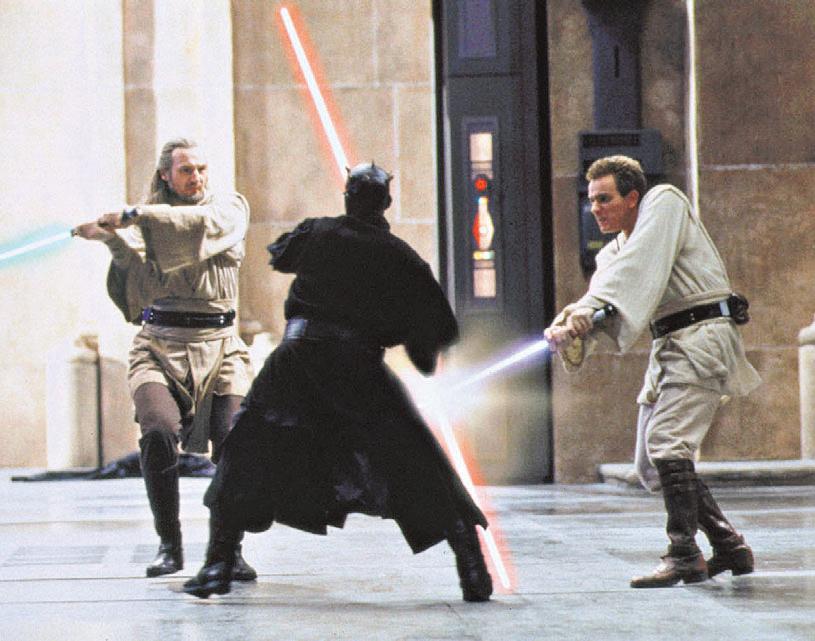
listed this belief in extra terrestrials as “an instance of gratuitous assumption, which as such was useless to argue with.”
In spite of all the radio telescopes and the millions spent by SETI (Search for Extra Terrestrial Intelligence) enthusiasts since Newman’s time, not a
single glimmer of any intelligence has echoed back to this planet. There has been no evidence of life anywhere. Every probe shows only signs of dust. There are not even any signs of death. Science tends to support this. In the 2000 book Rare Earth: Why Complex Life is Uncommon in the
Universe, for instance, two professors from the University of Washington in Seattle maintained that even primitive forms of life may be restricted to a narrow corner of our Galaxy.
The most likely scenario, then, is that we are alone in the Universe. There are no little green men and their fantastic machines. This has enormous implications for our collective self-esteem.
If we are alone, this unimaginably immense universe was created by a benevolent God so that we could live in a small corner and goggle at the stars. As the new Pope, Benedict XVI, said in his inauguration homily, we have been willed by God, each and everyone of us, and we have the entire universe as a playground all to ourselves. Perhaps it’s selfish of me, but that’s the way I like it. Nonetheless, I’m going to keep on reading the books of Arthur C. Clarke.
After completing his studies, Walter Macken decided to become a priest. He contributes columns and comment to newspapers in Ireland. He is the son of the Irish novelist and playwright Walter Macken.

‘A faithful and sure synthesis of the Catechism of the Catholic Church. It contains, in concise form, all the essential and fundamental elements of the Church’s faith.’
Pope Benedict XVI

Key Features:
• Close reliance on the Catechism
• A question-answer format
• Teaches through words and colourful artistic images
Hardcover 220 x 160mm 208 pages
ISBN 1 921032 13 8 $24.95
Paperback 215 x 152mm 208 pages ISBN 1 921032 12 X $17.95
DEUS CARITAS EST
Pope Benedict XVI’s first encyclical letter is devoted to the theme of love, which is at the heart of Christian Faith. The letter reflects firstly on the origin and different manifestations of love, and then addresses the way in which the Church is called to live the commandment of love.
Paperback 115 x 182mm 72 pages

ISBN 1 921032 04 9 $5.95
ST PAUL SUNDAY MISSAL 2006
• Contains the Order of Mass, including all Eucharistic Prayers, and

• All the Scripture readings and prayers for each Sunday of 2006, in sequence
• The complete Easter Liturgy for 2006 (Holy Thursday, Good Friday, Easter Vigil)
• A treasury of prayers
ISBN 1 921032 01 4 384 pages $14.95
ST PAULS PUBLICATIONS
PO Box 906 Strath eld NSW 2135
Tel 02 9746 2288 - Fax 02 9746 1140 - Email: marketing@stpauls.com.au
For online orders and catalogue visit our website: www.stpauls.com.au



We are a tolerant society. Or are we?
It’s little-known, but many women who find their pregnancy diagnosed as having a problem or a potential problem have to overcome ‘reasonable persuasion’ from doctors just to be able to have their babies.
While she was in Melbourne for a round of media appearances about her latest book, Defiant Birth: women who resist medical eugenics (Spinifex 2006)
MELINDA TANKARD REIST spoke to Anna Krohn about the inspiration behind her research.
In this book there are gathered together the stories of women who chose to have their babies, despite facing the disapproval or even open hostility of their families, friends and particularly the medical profession.
This book has a more international feel, as the 19 women’s stories have been gathered from around Australia, from America and many other English speAnnaing countries.
There are two broad groups of women who share their stories in Defiant Birth – those who felt the pressure to terminate their pregnancies because pre-natal screening indicated that they were ‘at risk’ of giving birth to a disabled child; and those women who chose to have babies though they were disabled themselves.
Anna: Your first book was an important breAnnathrough, in that the harrowing stories of post-abortion grief were given the space to breAnna the social and ideologically imposed “silence” you speAnna of. This book is no less honest and hardly toes the politically correct line eitherbut instead of grief, one finds the women’s courage very moving and up-lifting. You mention that these stories “overhauled” your own thinking?
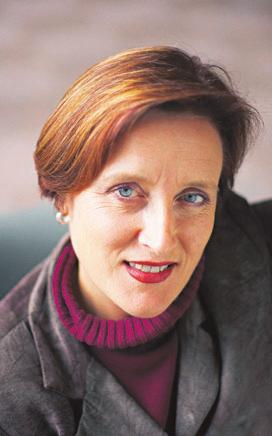
Melinda is based in Canberra as a researcher, writer and activist for women’s health. Her articles about matters relating to reproductive technology, life ethics, and the depiction and treatment of women in the media and society have been widely published in Australia and overseas. She is a founding director of Women’s Forum Australia. Melinda is perhaps best known for her first book, Giving Sorrow Words: women’s stories of grief after abortion (Duffy & Snellgrove, 2001).
Melinda, when I reviewed your first book, I was struck by the way you allowed the rawness of each woman’s voice and situation to speAnna on the page. Have you adopted the same method in this book?
Melinda; there is a feminist saying which goes, “If you want to know what women are thinking… ask them!”
That is what I have tried to do. Strangely, when it comes to pregnancy and childbirth, society seems to prefer that some experiences and problems remain hidden and that women remain compliant and silent.
Melinda: As I gathered the stories together, it struck me that the women who told their stories were full of hope and the courage to think outside society’s restrictions. They continued their pregnancies, and have been daring enough to challenge the widespread and prevailing attitudes and fears about disabled children. began to see that this book might help women question the assumptions of the entrenched technologies of pre-natal screening and termination.
It also prompted me to re-examine my own emotional reactions and attitudes to disability itself. I realised that our entire society had to rethink the impact that pre-natal technologies coupled with an irrational prejudice have upon the rights and dignity of disabled people.
Anna: I believe that you originally planned to subtitle this book: “women who give birth against medical expectations”, but on reading further you opted for the far more damning wording “women who resist medical eugenics”. Is that too extreme?
Melinda: I don’t think so. I believe that while the “old style” eugenics of the 1930’s was more overtly high-handed and coercive, there is a new face to eugenics embedded at many levels of society and particularly in the medical profession. While appearing to provide a smorgasbord of “reproductive choices”, women are pressured to mAnnae “positive” or “responsible decisions” which require them to abort their “unacceptable” children on the basis of “cost-benefit” calculations, perfectionist imperatives and unnamed fears which require the elimination of the imperfect and suffering.
The more I studied the history of the old eugenics the more I could see a direct lineage with the philosophy of those who promote the new screening technologies under the mask of “reassurance” and health promotion. I try

to outline this in the introduction to the book. Medical expertise is used in these situations to pressure women to “de-humanise” their unborn and to catastrophise
the event of disability. In its worst examples, women are made to feel that they are responsible for creating a criminal burden not only for themselves but for the whole
of society. Rather than welcoming the difference and responding to the needs of the child, the family is made to feel that they have allowed a “preventable evil.”
Anna: Melinda you began your professional life as a journalist, what made you interested in directing your investigative skills to this topic?
Melinda: Well, I remember at school I always hated bullying and violence. In both my books I have wanted to expose the bullying of the medical professionals and the dismissive, dogmatic and superficial advice offered by genetic counsellors.
Anna: Melinda some of the language you use could be associated with feminism. Yet the feminist movement these days is usually associated with the so-called “prochoice” position in relation to pregnancy termination. What distinguishes you from this position?
Melinda: I agree with the feminist Gloria Steinem, that anyone who opposes the mistreatment of women and who understands the situation of women is a feminist. In my books I try to de-construct the contexts in which women mAnnae decisions about pregnancy and childbirth and to understand the subtle and not-so-subtle pressures which lead women to be coerced into having abortions. They do not have “freedom of choice”. I believe that abortion under these circumstances does particular violence to the integrity and wellbeing of women.
Anna: In recent interviews you have had it is clear some people don’t know where to put you. You have resisted easy labelling. What are your comments about this?
Melinda.: I try to resist ideological labels. It’s too convenient and lazy for people to pigeon hole you rather than consider your arguments and look at your work on its merits. I like what Peter Garrett said about not wanting to conform to someone else’s descriptions of him. He said: “I reject the idea that you can stick a label on someone’s forehead and therefore know what they do and what they stand for.”
I don’t think you should have to conform to an ideological stereotype before you are given a hearing on issues that seriously affect women’s freedom, well being and health.
Anna: It is also interesting that this book has been published and promoted by Spinifex Press, one of the leading radical feminist publishing houses in the world.
Melinda: Its been a pleasure and an inspiration to work with Renate Klein and Susan Hawthorn at Spinifex. These publishers have been remarkably encouraging to me both personally and professionally and have never wavered in their commitment to the importance of the issues raised in this book. Spinifex has courageously published works which expose the trafficking of women, the violence and exploitation of prostitution, the dangers to women of reproductive technology and pornography. I have gained so much from my involvement with them.
Anna: I particularly like the notion of “defiant birth”.
You imaginatively portray the tough willed but outwardly unassuming and gentle women in your book as “genetic outlaws” and their babies as “wild children” in the monoculture of eugenic conformity. What single quality do you think unites these women in their stand? And how can we hand on this resolve to other women?
Melinda: That’s a good question. I would say that each woman in her own way has an inner conviction about the value of her child and of her own role as mother. Some describe it as an “inner voice”, others as an unfaltering love which leads them to the sense that they must defend their child, however short or disabled their child’s life may be. They also seem to have the courage to value difference and to step out into unchartered territory. Julia Anderson (wife of former deputy PM, John Anderson) and others say that their disabled child “overhauled our family from the inside” and that this made them a stronger and better family than before.
I hope that stories such as these may lead us as a society to recognise the transforming energy of such experiences, so that instead of losing our sense of humanity and interdependence with the differently abled we widen our vision and our acceptance and support for them. In my book I see the women as leading a resistance movement, and say “humanity will be richer for the resistance. In fact, its depends on it..” (p 298).
- ANNA KROHN, a writer specialising in life and ethical issues, writes for discovery from Melbourne. Melinda Tankard Reist is also a co-founder of Women’s Forum Australia, an independent women’s think tank that conducts research, education and public policy development about a broad range of social, cultural, health and economic issues that affect women. It can be found online at: www.womensforumaustralia.org

More and more people are beginning to notice - and question - the gap between Hollywood and its movies and the rest of society. The recent Academy awards seemed to highlight the problem even more. Commentators are noting a hardening of Hollywood’s values. Or should that be absence of values?
The gap between the Hollywood glitterati and the guys and gals who buy tickets at the box office appears to be widening.
“I’m proud to be a part of this Academy, proud to be part of this community, and proud to be out of touch”, said George Clooney, as he clutched his Oscar for Best Supporting Actor at the 78th annual Academy Awards. He was replying to the charge that Hollywood is out of touch with the real America.
“Guilty as charged” was the only plea that Clooney could have made.
This year the Academy was besotted with confronting, challenging, nosethumbing films.
The nominees for the major awards were clearly meant to rattle the cage of middle America.
They focused on racism in Los Angeles in Crash, homosexual love in Brokeback Mountain, evil multinationals in The Constant Gardener, gay writers in Capote, and terrorism in Munich
As a result, the gala Oscar night was watched by the lowest number of viewers for 20 years.
It seems to have been a message to Hollywood that Americans dislike

films which undermine traditional values.
According to figures from Nielsen Media Research the Oscars had an average audience of 38.8 million
viewers in the United States - down 8 per cent from last year.
But instead of accepting the jury’s verdict, the Hollywood media, trade magazines and blogs resorted to the blame game.
On the next day they were blaming middle Americans not for being open-minded, host Jon Stewart for his lacklustre performance, the format for allowing background music during the acceptance speeches, and the presenters for their lame jokes.
However the fact that the top five box office hits of 2005 through to March 2, 2006 grossed five times more than the five big Oscar winners (Best Actor and Actress, Best Supporting Actress and Actor and Best Motion Picture) is an indication that Hollywood is losing touch with the general public. It must be the first time that the Best Documentary has grossed more than the Best Motion Picture - and one made by the French about penguins, to boot. The figures for box office
receipts in the US (for 2005-to March 2, 2006) are in the box below.
And if you compare the movies according to their Movie Picture Association of America (MPAA) ratings, the top five box office hits included only one R-rated movie, while the top five Oscars had only one PG13-rated movie.
The correlation between ratings and box-office success was first presented in a report by the Dove Foundation in January of 1999, The Profitability Study of MPAA-Rated Movies
A 2005 update showed that G-rated movies are 11 times more profitable than R-rated movies.
A conservative think tank, Family Research Council, has commented that the Oscar winners “are far less concerned about entertaining people than they are with trying to shape the culture and advance a political agenda”.
And in fact, several of these admitted that shaping society was their main motivation.
Diana Ossana, winner of Best Adapted Screenplay, for Brokeback Mountain, said: “The duty of art is to send light into the darkness of men’s hearts”.
Paul Haggis, winner of Best Original Screenplay, for Crash, quoted the playwright Bertolt Brecht: “art is not a mirror to hold up to society but a hammer [with] which to shape it.”
Most would not know that Brecht was a German hard-core Marxist who uncompromisingly supported Stalin’s reign of terror which resulted in the
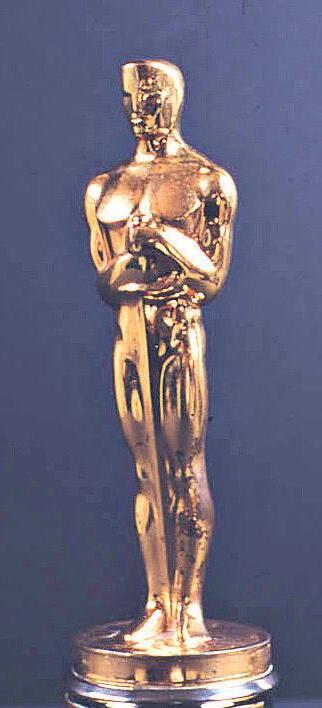
deaths of tens of millions of people - possibly 65 million - in the Soviet Union over decades.
In his opening words Jon Stewart jokingly said that Americans view Hollywood as too liberal and out of touch - basically a “shorefront Sodom and Gomorrah”.
Mothers and fathers in Spain are in danger of being officially relabelled Progenitor (parent) A and Progenitor B, whether they like it or not. That’s how they would appear henceforth in the Family Book of the civil registries, according to a government decree issued last week. The Minister of Justice said the move was necessary because the law now allowed for same-sex “marriages”. Such couples are also allowed to adopt children.
Almost immediately, however, the government back-pedalled, claiming that the Family Book
Fr Jonathan Morris is an analyst for Fox News in the US. He offers the station ethical perspectives on current events.
Q:Hollywoodisabusiness.Sowhy is it giving awards to products that aren’tworking?
Father Morris: Hollywood is a business, but more than a business.
It is an elite group of highly intelligent and wildly creative people steeped in a subculture that has been sick for a very long time.
I know people in Hollywood. I’ve worked on Hollywood sets. The people are good, their talent is superb. But they are steeped in a sick culture and it has its effects. It changes the way we think and what we value. The Oscars reveal what Hollywood values.
It isn’t a coincidence that the big moneymakers were devoid of big propaganda. They didn’t glorify homosexuality - like Brokeback and Capote. They didn’t squeeze in 182 expletives - like Crash
Q: Some might argue the “best” moviesaren’tnecessarilythebiggest moneymakers, since they might demand more intellectual rigour to appreciate them. Could that be the casethisyear?
Father Morris: You are right to point out box-office revenues alone don’t determine artistic worth. Pornography, for example, is a profitable industry, but it is bad in every way. In the movie industry, however, people think twice about what they see. Going to the movies is an investment of time and money.
The joke fell flat and Stewart quickly changed the subject.
But with this year’s 8 per cent decline in Oscar viewers and a 9 per cent decline in movies attendance for 2005, Stewart might have a point.
Diane Bryhn is a freelance journalist in New York.
model with mother and father will co-exist beside the new progenitor A and B model. And the revisions may not stop there. Lesbian groups do not like the term “progenitor” because its gender is masculine. They are suggesting Progenitor A, and Progenitora B.
Spain-based journalist Robert Duncan suggests, ironically, just calling them both progenitoras (plural), “or, while we are at it, why not facilitators. After all, nowadays mothers and fathers in Spain are nothing more than outdated, endangered expressions.” Duncan says so far, only around 400 samesex couples have bothered to get married in Spain. ~ LifeSite News, Mar 13
The numbers show Americans don’t think propaganda is worth their while.
On the one hand, people want to see movies which will help them relax, escape momentarily. I think it’s a legitimate desire. That’s why science fiction movies like Star Wars have always been so big.
But there is more to film than escapism. We are attracted to learning something new about the world and about ourselves.
The Chronicles of Narnia and Mel Gibson’s The Passion of the Christ are just two examples. When Hollywood unites great art with great ideas the result is a blockbuster.
Q:Whatcouldyousuggesttoparents who are raising their children in this media environment?
Father Morris: Our mission is to be in the world without being of the world. We love to complain about the media. But there is a danger in spending our limited energy on criticising and tearing down, without ever daring to build up. We need to shield our children from evil, but first and foremost we need to teach them the beauty of God and their faith. Children can’t love what they don’t know.
In the past, parents relied heavily on healthy environments to teach their children what is good. The advent of the Internet age has changed all of that.
The new challenge represents a new opportunity: Be with your kids, teach them with your own example that the truth of the Gospel is the source of real joy. - Zenit.org FatherMorrisblogsat: www.foxnews.com/fatherjonathan


Since 1998 the little catechism “I Believe” has served religious, catechists, families and young adults as an aid to learning and teaching the Faith.
This new edition, revised in collaborationwith the Vatican’s Congregation of the Clergy, is a great help for all those who want to better understand the basics of the Catholic Faith and who are looking for a clear guide for their journey with and towards God.
Over 3 million copies distributed worldwide

The new edition follows still more clearly the structure of the Catechism of the Catholic Church, with numerous references to it.
The language of the text is simple and accessible to all.
The first part of the book is based upon the Apostles Creed.
Each article of the Creed is explained in a separate chapter and beautifully illustrated with examples from the Bible. The second part is devoted to the Sacraments, the life of Jesus, prayer in the Christian life and an explanation of the Lord’s Prayer.
Beautifully illustrated throughout
Just $10.00 a copy
A beautiful hand made olive wood rosary made by needy Christian families in Bethlehem will be sent to all those who give an additional charity donation of $12 or more to help support the Christians in the Holy Land*. Please tick the box below if you would like to receive the Rosary from the Holy Land.

Nano is the Next Big Thing for technology, with giant leaps forward expected in health, energy, clean water, agriculture - and, above all, computing.
■ By Leo R. MaliksiInformation technology and biotechnology are so five minutes ago. The technology of the future is nanotechnology.
Nanotechnology promises breakthroughs that will revolutionise the way we detect and treat disease, monitor and protect the environment, produce and store energy, and build complex structures as small as an electronic circuit or as large as an aeroplane. It will have a fundamental impact on many sectors of the economy, leading to new products, new businesses, new jobs, and even new industries.
Neal Lane, director of the White House Office of Science and Technology Policy under former US President Bill Clinton says, “If I were asked for an area of science and engineering that will most likely produce the breakthroughs of tomorrow, I would point to nanoscale science and engineering.”
But nanotechnology is a mystery to most people. What is it all about? Basically, it is the ability to work at the atomic and molecular levels, corresponding to lengths of approximately 1 to 100 nanometres, or 1/100,000th the diameter of a human hair. It is not merely the study of small things; it is the research and development of materials, devices, and systems with different physical, chemical, and biological properties of larger objects.
By altering the atomic configurations of known substances, nanotechnologists yield devices useful in everything — from medicine to data storage to the speed with which a desktop or a notebook does word processing.
“Nanotechnology is harnessing the new properties of matter that appear only at the nanometre size scale.” said Dr Stanley Williams, the director of Quantum Science Research (QSR) at Hewlett-Packard Labs in California.
At the nanometre scale, the physical and chemical properties of materials change with their sizes and shapes. For example, if you cut a one-meter long piece of steel in half, it is still a piece of steel. It has the same molecular structure, the same conductivity and magnetic properties. “But if you cut a one-nanometre long piece of steel, everything about it changes,” said

Too small to see: this triangular particle, which is about 25 billionths of a metre across, could become one of nanotechnology’s contributions to the fight against cancer. Three strands of RNA – a close chemical cousin of DNA – are linked together to form this “nanoparticle,” created in the lab of Purdue University’s Peixuan Guo laboratories. Each of the strands is spliced together from two kinds of RNA – one sort serves as a scaffold and dovetail to hold the particle together; while the other carries a hunter to find cancer cells, a marker to detect the target, or genetic instructions deadly to a cancer cell. The nanoparticles have already proven effective against cancer growth in living mice as well as lab-grown human nasopharlyngeal carcinoma and breast cancer cells.
Williams. To cut a one-nanometre long piece of steel needs a scanning electron microscope that enables us to see the atoms that make up that piece of steel.
At a recent Nanotechnology Forum in Taipei, Williams showed the picture of a piece of wire made at the Hewlett Packard lab and captured with such a microscope.
It measured 3 nanometres wide, meaning that you could see the atoms that made up the wire. The atoms appeared as granular bumps on the surface of the wire.
He pointed to a larger bump on the surface and said that they were a clump of atoms that formed on the surface, a mistake in the process of making the wire.
“It’s a small number of extra atoms that just decided to form a little clump
and shows you that at the atomic scale, you simply cannot build anything perfectly,” he said. Working at the nano-scale means having to deal with the law of small numbers —that there will be fluctuations in the properties of whatever it is nanotechnologists work with. In working with electronic circuits, this means the inability to build anything that works perfectly.
“The problem we face is how to build a machine that works exactly how you want it to even though the machine is broken on the day you make it.”
The answer to this question could lie in the foreseen increase in demand for nanodevices such as scanning electron microscopes needed to look at nano surfaces and to work on the nano scale.
The scanning tunneling microscope
Nanotechnology has the potential to revolutionise everyday living. These are some of the cooler developments:
Nano-Armour: An Israeli company, Isracast, has created a nanomaterial which can withstand the impact of 250 tonnes/cm. This could be in body armour for police within three years.
Nano-Fridge: At 25 by 15 micrometres, the nano fridge can chill your Coke down to an icy -272C. It is so
(not to be confused with scanning electron microscopes), or STM, is another nanodevice. It was invented in 1981 by Gerd Binnig and Heinrich Rohrer of IBM’s Zurich Lab.
The STM for which the two inventors won a Nobel prize in physics in 1986, allows scientists to visualise regions of high electron density and hence infer the position of individual atoms.
In March 2004, R&D magazine cited a survey of the global nanotechnology market. It showed that the market size for nanomaterials was roughly US$7 billion in 2003 and that is was projected to grow to over US$20 billion by 2008.
“There is practically nothing that you could buy today,” said Williams.
efficient that, were it the size of a person, it could cool an object the size of the Statue of Liberty.
Nano-Cars: Move over VW, the worlds smallest car, built at Rice University in the US, is 4 nanometres across. It has axis’, chasis and pivot suspension.
Nano-motors: at 200 nanometres it won’t fit in your car. It will hopefully be enough to travel inside the body to deliver medicines.
Nano-Pens: Fine print gets a new meaning. Scientists can now leave a tag 40 nanometres wide.
“But the market will grow from nothing to over US$5 billion dollars per year by 2008.”
After that the market for nanoenabled circuits and devices will go from practically nothing to many billions of dollars within 10 years.
The market transformation will likely be felt in the area of computing.
“We may be happy with our computer today, but they’re actually just toys,” Williams said.
Even the best computers by any definition of efficiency, are outrageously slow. They only create wasted heat and can’t perform complex calculations.
“The problem is not the transistors; the problem is the wires - charging up all the wiring takes up a lot of energy.”
Since the first commercial transistor radio went on sale in November 1954, the transistor has become the only semiconductor device used for sound amplification, power switching, voltage stabilisation, signal modulation and many other functions.
But who needs transistors?
Early last year HP announced that its researchers at QSR had invented a technology that could replace the transistor - the fundamental building block of computers for the last half century - leading to a new way to make computers in the future.
Their invention, published in the Journal of Applied Physics, was a “crossbar latch”, two sets of parallel nanowires that connect two plates of integrated circuits. Those nanowires, like transistors, act as switches or valves for the electronic signals that travel within the IC chips that make a computer work.
“We re-invented the computer at the molecular scale,” said Williams.
“The technology could result in computers that are thousands of times more powerful than those that exist today.”
Phil Kuekes, a senior computer architect at QSR said that transistors will continue to be used for years to come with conventional integrated circuits.
“But this could someday replace transistors in computers, just as transistors replaced vacuum tubes and vacuum tubes replaced electromagnetic relays before them.”
“There is currently a tremendous business incentive to invent new electronic devices and circuits that will have dimensions of the order of nanometres,” said Williams.
“New fabrication techniques will be needed that could produce and connect these devices in vast quantities at low cost.”
Imagine you’ve got your laptop open running iTunes, Quicktime, Garageband, Firefox, Word and you are ripping a CD to AIFF. Things start to slow down. All of a sudden your wireless kicks in.
The wireless in your high definition TV that is. Your HDTV synchs its Cell with yours, using its idle time to handle the CD ripping.
It doesn’t help too much though, because your brother is playing his PS3 which is also utilising some of the HDTV’s two Cells.
Luckily, your Blu-Ray DVD Cell has also connected, as has your wireless printer.
When first conceptualised, engineers were told to create a processor which mimicked the cells of the human body... US$400 million later, they have designed a general purpose processor, clocked at 3.2Ghz, on a 90 nanometre die.
This is the future. In the close future, instead of upgrading your hardware, you upgrade your house, your network.
Instead of games requiring a Playstation four, it may require two stacked PS3s. Like the adoption of any radical technology, this will take time and may fail.
And it may be too hard to implement. Sony’s expectations are grand though, and if they are right, the radical future may only be a decade away.
The Cell promises to revolutionise the way computers work. With Cells, the software mirrors the hardware. Software is designed in unitised parts, or software cells. The idea is that any software cell can be sent to any SPE in any processor. This lends itself to distributed parallel processing.
When Sony announced their Playstation would contain the revolutionary Cell processor they were greeted with both applause and criticism.
If Sony’s gamble is correct though, the Cell processor will soon dominate the processor market. The Playstation could be the first of many appliances and computers which house a Cell.
When first conceptualised, engineers were told to create a
processor which mimicked the cells of the human body. The Cell is the brainchild of Sony’s Ken Kutaragi, and the product of cooperation between IBM, Toshiba and Sony. $400 million later, they had designed a general purpose processor, clocked at 3.2Ghz, on a 90 nanometre die.
For many years the IT industry has fluctuated between simple, Reduced Instruction Set Computers (RISC), and more specialised Complex Instruction Set Computers (CISC).
For example, the Pentium 4, a CISC processor has specialised multimedia extension built onto the chip. The Cell is a move back to RISC design.
RISC processors such as the Cell move the programming workload to the software engineers.
The upshot is that the chip has a lot more power. Instead of wasting transistors on a 20 stage pipeline like the P4, that silicon can be put to work or used as high speed RAM or in processing units.
The Cell’s use of silicon is unique. In the Cell there are eight Synergistic Processing Elements (SPEs) controlled by a Power Processing Element (PPE) and connecting these is the Element Interconnect Bus (EIB).
If you can get your head around the TLAs Three Letter Acronyms, the PPE controls the SPEs and the EIB provides a high speed connection between these nine units.
The PPE is based on the PowerPC architecture, the same as in an Apple computer, and the processor uses the same instruction set. However, the Cell is nothing like the G5, used to power Apples, or any other chip. It is a very basic chip and its purpose is only to deliver information to the right location.
The SPE’s are likewise simple chips; they are capable of multiple concurrent operations, or vectoring. And, like the PPE, they are in-order processors.
Because of this, a larger workload falls on the programmer or compiler to ensure the processor can do the right thing, in the right order, at the right time.
This is the basic element of the processor and when first announced, many people did not know what the fanfare was about.
However, there are some unique characteristics of the Cell which promise huge gains in performance.
The major difference between a normal CPU and the Cell is the Cell’s ability to stream.
The SPEs in the Cell can be chained together to transform information. For example, the chip could be embedded in a graphics card and pixels fed through the SPEs.
The first would transform it according to like sources, the second




Sony, Toshiba and IBM hope that new Cell technology will revolutionise the way we use computers. It will allow you to utilise the processing power of your television, DVD player and

texture, the third angle, and so on. Unlike the similar Graphics Processing Units though, the Cell is equally good at processing sound and video.
Already there are plans by Toshiba to embed the Cell in a HDTV. The theoretical gains from this type of computing are extraordinary.
A similar processor, the Nvidia GeRorce 6800 is capable of 40GFlops/ sec, compared with the P4’s 6GFlops. It’s like comparing a Commodore sedan with a Boeing 747.
To warrant the streaming capabilities of the Cell, Sony incorporated two technologies. Firstly, each SPE has its own 256kb cache. Like supercomputer processors, this memory is available to other SPEs.

Three 16bytes transfers per cycle gives the Cell an internal data rate of 384Gigs. And if that wasn’t enough the chips IO controller operates at 76.8Gigs, making it efficient to daisy
In the early days of computing, programming controlled hardware directly and operating systems evolved
Information can also be transferred via the EIB. The EIB is capable of transferring multiple data streams at exceedingly fast rates.
While originally designed with a 1024 bit bus, the EIB replaced that with four 16byte buses, capable of three independent data streams.

Instead, programs would interface with the OS which would provide a generic interface to specialised hardware.
While Cells are powerful, they are not smart. When programming and compiling the Cell, it is necessary for performance issues to program for the architecture. The PPE is a basic controller. The P4 can anticipate code and operate ‘out of order.’ However, if the Cell is accepted by industry,
complier writers will optimise Cell compilers, taking the onus off the
The other criticism is that, while the Cell is good at repetitive, or streamed tasks, there are some tasks it is simply bad at.
The x86 architecture has persevered in part because it is a general purpose processor, which, whilst being really good at nothing in particular, is good at most things. Still, most applications have some task that is well suited to Cell’s architecture.
The way we dress – and in particular the way women dress – is a sign of who we are and how we wish to act in the world. It is vital that we get this language right, says Carolyn Moynihan.
There can be few words that conjure up as many conflicting ideas and emotions as “fashion”.
To some it is redolent of excitement and romance, to others it reeks of tyranny and exploitation. A voyage of inner discovery for the true believer, to the cynic it is the essence of superficiality. For the typical teenager it is the sine qua non of social acceptance, for her mother, often, a symptom of the generation gap.
Attitudes to it vary but the fact of fashion remains: at any given time in a culture there will be a dominant mode of dressing that reflects ideas about beauty and what it means to be a woman or a man. It is a question of turning necessity (that of clothing ourselves) into art – and, increasingly today, into money.
Here, then, is the challenge of fashion today: to rediscover it as an art that expresses the true dignity and attractiveness of the person. This applies especially to women, who are the focus of fashion, and the only ones who can put their authentic stamp on it. Every woman shares responsibility for this project.
The idea of beauty
Historically, woman has been muse to the poet, artist and writer. She personifies the virtues, wisdom and the graces, making them attractive through the beauty of her outward form, and this is the essence of feminine power.
Beauty is meant to serve virtue, and this is why the concept of modesty has been central to the way a woman presents herself.
Modesty may have acquired negative connotations in Victorian times, but it really has nothing to do with timidity or a restricted social role for women. On the contrary, a style of dress which is feminine without emphasising a woman’s sex allows her the freedom to express her intellectual and spiritual qualities without giving mixed signals.
Sign language
The sociology of fashion sees in clothes and accessories a sign language that non-verbally communicates meanings about individuals and groups—their social status,

occupation, roles, group affiliation and values. Dress creates a first impression of a person that either hides or reveals their true character.
The professional woman who dresses in a well-cut suit with coordinated accessories and carefully styled hair, and the girl who “dresses up” in tight, low-riding jeans and clingy top, are both making a statement about themselves.
Indeed, even people who think they are making no particular statement—for example, a young mother who simply dresses in what is practical and affordable—are still telling the casual onlooker much about themselves.
It is important, then, to be clear

about the messages our clothes give – not only in general but in particular settings.
Today’s fashion industry
Fashion today is big business. More people are involved in the buying, selling and production of clothing than any other business in the world. Advertising the latest fashions is a major source of revenue for newspapers, magazines, television and other businesses. Huge amounts of money are involved in the endless succession of new looks that trickle down from the leading fashion houses in Milan, Paris, London and New York.
Sofia Carluccio, a designer working in Uruguay, says she and her

colleagues try to take on board the latest trends from Europe, but “add to them certain values which we see as fundamental: elegance, harmony, and the effort to design every garment to enhance the dignity of the woman who wears it. Something which I am very clear on is that fashion is about dressing, not about undressing—that is a sort of leitmotif in all my work”
Even in Europe, however, there are signs of sympathy with that view. In a recent interview with GQ magazine Miuccia Prada, described as “the most powerful woman in fashion”, had this to say about the image of women in a popular television show:
“With women, the more unhappy

they are the more undressed they are. This is true. Dignity’s another very important part of this. Sex and the City is the opposite of dignity. You have to have dignity for your body — this is true with men and women. You need to have dignity towards how you are, how you dress, how you behave. Very important. Men are always much more dignified than most women.”
The challenge is of maintaining a truly human standard
It is one of the more negative marks of fashion and related industries today that it has carried sexiness into the world of young girls. The appearance of the Playboy “bunny” logo on children’s clothing and bras designed for eight-year-

olds in the Mary-Kate and Ashley range are two indications of a disturbing trend.
If there is one group in the eye of the fashion storm it is adolescents. Their emergence as a distinctive market during the past half-century has been tied up with the exploitation of their emerging sexuality and need to identify with their peer group.
Modesty should not be confused with being old-fashioned. Apart from expressing respect for one’s own body, modesty expresses the fact that others have a right to be regarded as intelligent, decent human beings.
Girls don’t have to choose between being dowdy and being provocative. It is possible to dress attractively without showing cleavage.
Dressing for success is not the sole preserve of the career woman as she is generally defined. Rather, it is a guiding principle in every career a woman may embrace. Canadian mother of ten, Irene Freundorfer urges mothers to “dress for success in your marriage and in the education of your children”.
Mums are the blueprint for their children’s perception of femininity and motherhood, she stresses. “Dress up, dress feminine and take care of those little details out of love for your husband, your daughters and your sons. In today’s society, your family needs your example. Show them the dignity and example of being a woman who puts fashion at the service of a noble and pure love.”
At a recent seminar in New York

Women lawyers who don’t know how to dress for court have been given a dressing-down by an Australian Supreme Court judge.
“There is no problem with the bar, as there is a standard form of dress,” writes Justice Peter Young, who is also editor of the Australian Law Journal.
“There has been virtually no problem with male solicitors, who invariably wear jacket, tie and long trousers.
“However, it is clear that some
female solicitors have no idea of appropriate court dress. The worst offenders are usually wellbuilt women who expose at least the upper halves of their breasts, and as they lean forward to make a point to a judge sitting at a high level they present a most unwelcome display of bare flesh.”
Justice Young, writing under the heading of “Politeness”, says a judge does not want to embarrass a woman by making a remark and it would be handy if senior partners in law firms could see to this matter.
- Sydney Morning Herald, March 25
world-renowned designer Oscar de la Renta noted:
“Beauty is not something you are born with. At 18, a woman might not be so good looking but at 40 she could be extraordinary looking. That is the beauty that interests me — the beauty you create.”
But, he adds, this creation should be an expression of one’s identity and requires work and discipline on a daily basis.
Women have long been able to stave off grey hairs and other signs of age. They no longer have to look like older women when they hit fifty, and can continue to dress in youthful colours and styles. On the other hand, the 60-year-old trying to look like 20 merely looks silly.
With the ageing of the baby boomer generation the fashion industry has begun to acknowledge that there is a mass market for welldesigned clothes for mature women and a variety of figures. Everything, however, hangs on women’s sense of who they are and how they want to act in the world.
“With the turn of the millennium,” says Sarah Smith, “there seems to be a shift towards a new elegance, bringing back some of the best of the old, while continuing to search for the right fashion statement for the women of the present.” Historical references give women the freedom to wear many styles that are “vintage”.
Taking advantage of such options each woman can “design a wardrobe suited to the part she plays in the continuing drama of the 21st century woman”.
- Carolyn Moynihan is Deputy Editor of Mercatornet and of FamilyEdge.
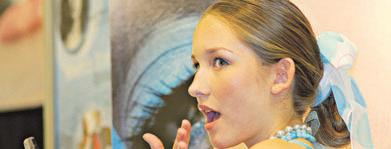
“How many cares one loses when one decides not to be something but to be someone.”
— Coco Chanel
“Fashions fade, style is eternal.”
— Yves Saint Laurent
“The difference between style and fashion is quality.”
— Giorgio Armani
“To be well dressed is a question of discipline and discipline is something that one learns.”
— Oscar de la Renta
“Sometimes, a woman filled with all sorts of uncertainties in most of the areas of life and emotion, will have her only confidence and independence in her fashion-sense. I’m sure this is a misfortune. Fashion should not be expected to serve in the stead of courage or character.”
— Loretta Young
“I have a full, rich respect for fashion. I love its whimsy, its humour, its charm and its rewards. I love its vagaries and its demands. I love what it does for women. But I know, with all my heart, that no woman should follow it blindly.”
— Loretta Young


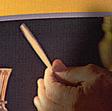
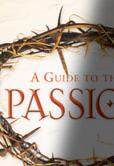







































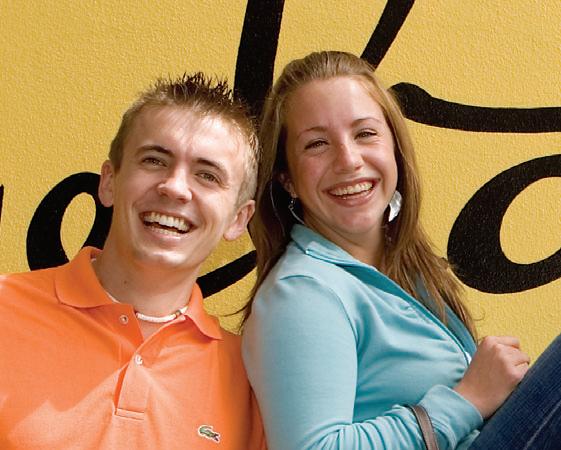
The University of Notre Dame Australia is committed to equipping students with the skills and knowledge to become global citizens and contributors in a changing world.
Notre Dame has established formal exchange agreements with a number of Catholic universities in the United States, some of which allow students to be located in London, Dublin, Belgium and Rome. There are also opportunities in Asia and South America.
Exchange agreements allow students to spend one or two semesters in another country while gaining credit towards their Notre Dame Australia degree. There is also scholarship funding available to successful applicants which provides funds to assist with the travel and living costs associated with overseas study.
On her way to Belgium
Santa Maria graduate, Emma Cavanagh,will soon be on her wayto Belgium to study at the Catholic University of America (CUA). Emma is currentlyenrolled in a double degree Bachelor of Laws/Bachelorof Arts. Whilst in Belgium, Emma, will have the chance to do an internship in the European Parliament whilst attending classes on European Politics and History.
Other Notre Dame students are awaiting their confirmation for their study abroad experience later this year. Planned destinations include Boston College and CUA in Washington, DC, USA.
I am now only a few units away from completing my commerce degree in Finance and I could not be more content with the university choice that I made. A fundamental aspect that attracted me to study at Notre Dame was its ethos. Having studied at a Catholic secondary school, I identified with Notre Dame’s commitment to the pastoral care of its students. In particular, the level of support and individual attention I have received from the School of Business has been outstanding.
The combination of small class sizes and practical focus has provided me with a unique opportunity to obtain a comprehensive, theoretical and practical finance qualification. An incredibly valuable opportunity that the School of Business offers is the mandatory internship. This has left me feeling confident in the professional skills I have gained during my studies.
Studying Finance at Notre Dame has been a true privilege. The valuable friendships that I have made make the challenges of a university education very rewarding. If you are looking for an outstanding qualification in finance in an enjoyable learning atmosphere, Notre Dame is the ideal choice.
“ “
If you are looking for an outstanding qualification... Notre Dame is the ideal choice.
NATHALIE RASSOOL Third Year Finance Student
